THE ALIEN: SERGEI VASYLEVICH RACHMANINOFF (1873-1943)
If you imagine yourself who finds himself, down a dark and lonely street in the middle of the night, a very tall man, with a broad physical build, very short hair, large and separated knuckles (which denote aggressive personality according to Conan Doyle), enormous hands, with very marked features of the face, wide lips and with a hieratic expression, with a face of “few friends”, dressed elegantly.
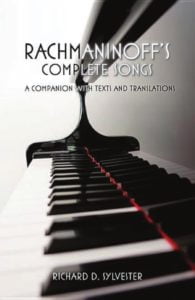
If this man approaches you in those circumstances, at the very least, I would be afraid. At that moment, he asks: What time is it, please? Then you would calm down a lot, and he would observe a slight smile on Rachmaninoff’s face, almost like that of the Mona Lisa“.
Sometimes the appearances deceive. Many pianists need to move their body a lot to give lyricism to their interpretations.
However, others are like rocks in front of a piano, and yet still get performances much deeper and more lyrical than the previous ones. This is the case of Rachmaninoff, and also of Arthur Rubinstein.
Best Sheet Music download from our Library.
In the book of Harold C. Schönberg “The Great Pianists”, in a chapter titled “the puritan”, it is said:
“(…) The tall, dour, lank, unsmiling figure of Sergei Rachmaninoff, with its seamed face and head of close-cropped (almost shaved) hair, invariably reminded the public of a convict on the loose.”

Rachmaninoff in concert.
This phantasmagorical character that the figure of Rachmaninoff produces, this impression aural, has a faithful reflection in his music.
At conceptual levels, something The same is true of Liszt. While Liszt reflects on us a music full of mythological fights, conflicts between life and death, Rachmaninoff shows a ghostly, ironic personality, like someone who thinks that these deep thoughts can be better expressed in a way ironic, sometimes humorous, reflecting it in a music full of contrasts, almost appearing superficial.
But it is quite the opposite, what he actually demonstrates is honesty and naturalness, evidence of being a primary music that is born from the heart. Precisely there is the Rachmaninoff’s magical personality.
Its music, sincere in itself, it does not obey objectionable musical tendencies musically, Rachmaninoff belongs neither to romanticism nor to classicism nor to post-romanticism. Rachmaninoff has always been accused of being a conservative, of anti-novel.
Quite the opposite of what is thought: You have to be brave to compose in that style, while they were already making their first steps into music in entirely new languages. And it is that the difficulty of classification of Rachmaninoff’s music within a period is totally logical since his music is so personal to him, so born from the heart, which does not require the use of new resources or pursues originality in language.
Although we can say that his music is typically Russian, he always argued that he never proposed to make Russian music, but his music is like that because he is So.
Rachmaninoff was always very reluctant to reveal his source of inspiration. About his creative process, he used to say these words: “I hear the music in my head. When the music stops, I stop writing.”
He once recounted to a journalist that his inspiration in many cases came from sources literary or pictorial. It is known that “The Isle of Dead” was composed after observing some paintings by Arnold Böcklin with the same title. In this same painter, the Studies-Tableau of him are inspired. But Rachmaninoff was very insistent that his sources of inspiration were not more than inspirations, and not previous programs to develop the pieces, except in one piece:
The “diabolical” study in La minor Op.39 n.6, one of the three that he recorded, and that as he himself commented to Respighi in a letter, is the musical expression of the tale popular fairy tale “Little Red Riding Hood”, of which he is also participate in the Prokoffian “Diabolical Suggestion”.
Please, subscribe to our Library.
If you are already a subscriber, please, check our NEW SCORES’ page every month for new sheet music. THANK YOU!
But after a first analysis, it is clear to deduce that there are two leitmotifs that appear and reappear in Rachmaninoff’s music:
On the one hand the sound of bells from his early years in St. Petersburg, taking the maximum expression of him in “The bells”, his favorite of among his compositions. We can also quote the prelude Op.32 N.3 in My biggest.
On the other hand we must talk about Russian Orthodox choral music, which made a great impression on him, as did the music of North America, of which we can find traces in numerous pieces, in special in the Rhapsody on a Theme by Paganini, which conjugates music American with his personal Russian flair; and of course, in his room concerto, of which the second movement is inspired by a spiritual black.
Rachmaninoff shared with his friend Feodor Chaliapin the firm conviction that a piece always had a unique climax. This interpretive method consisted of determining in each piece what the climax is, and everything In addition, each “p” or each “ff” must lead to that climax, or come out of it.
It is an axis on which the interpretation is based of the piece, a spotlight placed exactly in the ideal place, which illuminates the interpretation as if it were light in a pictorial creation.
The method of Rachmaninoff’s study consists of working on a piece of music as if you were the composer yourself, dividing the study into different phases.
Expressing it in his own words: “You must take the work apart, peer into every corner, before you can assemble the whole” . Of course, always keeping a logic with about the “turning point,” or climax.
The worst review that he himself could do at the end of a recital is to forget that point culminating. It made no difference to the interpretation of this or that passage were great, as he himself recounted: “either the whole made sense, or nothing did”.
This is a globalizing conception of a piece of music, means putting oneself in the place of the composer and not limited to being an interpreter, is the difference between the architect and the mason. The mason builds the brick house brick, the architect has it all in his head.
To Rachmaninoff only two or three conductors understood truly his work: Eugene Ormandy (New York Philharmonic), Leopold Stokowsky (Philadelphia P.), and Dimitri Mitropoulos.
Currently tends to underestimate Rachmaninoff’s recordings, to classify them within an interpretive style belonging to a period historical-musical. It tends to “romanticize” the music of Rachmaninoff, to make numerous ritardandos in the most lyrical passages, to play the slower music of him.
This is supposed to be a trend of the current musical thought, but nevertheless I advocate because it is about a misconception. A big mistake. All these piano players that play so their music, they don’t understand Rachmaninoff at all. Being lovers and studious of his music and his figure, we would give these recommendations of practices for pianists trying to play and understand his music:
1º.- The most important is to establish the climax of the piece, its high point. Does not have why be a short passage, nor does it have to be in “fff”, it is simply the harmonic and formal climax. It has to be studied formally the piece in a first stage.
2º.- The accents. Rhythm is essential at Rachmaninoff, you have to keep it up from start to finish unless otherwise stated. Forget the ritardandos and mannerist sensitizations at each end of phrase. You should always accentuate the strong part of each measure, in addition to the corresponding accents as written in the music sheet. You have to respect the score, looking for editions that are not reviewed by anyone other than Rachmaninoff himself.
3º.- The contrasts. There must be diabolical, phantasmagorical contrasts, it must give “fear”, between the Forte and the Piano. The fabulous technique of Rachmaninoff allowed him to make such contrasts at a speed higher.
4º.- Many Sometimes melodies are interspersed in a great way, playing with the voices. These melodies have to be heard as if it were a fugue, as as Rachmaninoff does in his recordings.
5º.- Stretch the hand to the max The only way for Rachmaninoff’s music to sound to Rachmaninoff is to use fingerings apparently “impossible” because of the extent they entail, but with the study are becoming affordable. The jumps think of them as extensions. The fear of jumping is only in your head, not in your fingers. reject editions with finger crossings and special fingerings for hands little.

Rachmaninoff’s hands
6º.- You don’t have to get scared or self-conscious hearing how quickly Rachmaninoff plays this one or that passage. Rachmaninoff only existed one, let’s not try to imitate the verbatim what he does, but if he does it quickly, we must try to do it like this. On the other hand, do not fall into the error of consider Rachmaninoff as a “machine”: what He plays fast, showing enormous talent and giving balance to the whole piece, because his technique allows it, let’s not be envious, let’s be humble and recognize our limitations!
Rachmaninoff himself was full of contradictions and was never happy with his interpretations of him, he even went through a period of depressions, from which he got out thanks to the help of psychiatrist Dr. Nikolai Dahl, and to whom he dedicated the second concert to him.
Must be realized the enormous talent of Rachmaninoff, playing his compositions. It is about perceiving something spiritual, something that cannot be studied or to say in words, to understand the austere Russian spirit, ironic, intelligent, phantasmagorical, of Rachmaninoff. Getting to cry listening to his Humoresca in G Op.10 n.5, or coming to hate his second concerto for piano and orchestra (comparing it with his other concertos, of course), they are not contradictory attitudes.
If we pretend to introduce you to a deeper Rachmaninoff than the Rachmaninoff that fans know, we’d suggest these pieces: Variations on a Theme of Corelli, Sonata No.2 for solo piano, Concerto No. 4 for piano and orchestra, Humoresca… and actually, many, many more, that are not usually played in concert halls due to their tremendous difficulty. Any pianist will recognize that it is much easier to play a concerto by Liszt or one by Chopin, than to start studying one by Rachmaninoff.
Hoping these tips help you, and you end up loving Rachmaninoff like many we already do it. But do not try to believe that you know how to play this or that Rachmaninoff’s piece without first having searched for and heard his recording: you will have big surprises. Hoping that from those clashes between the personality of each one and that of Rachmaninoff himself, visions are born positive and fruitful, and you understand this genius better.
The figure of Rachmaninoff is becoming more and more popular, proof of this and What is nice is the fact that web pages on the Internet containing the name “Rachmaninoff” are the most visited of among all the classical music websites, according to the counters of visits.
To end we’d conclude with two sentences, the first collected from a letter from Rachmaninoff to Medtner, after a series of recitals, about the “Variations on a Theme by Corelli”, and the second a comment that I subscribe:
“Not played them in full once. I was guided by the coughing of the public. When the coughing increased, I would leave out the next variation … In one concert … the coughing was such that I played only 10 variations … My record was 18. However, I hope that you will play them all and that you will not cough”.
“Rachmaninoff was made of steel and gold; steel in his arms, gold in his heart. I can never think of this majestic being without tears in my eyes, for i not only admired him as a supreme artist, but i also loved him as a man” ( Josef Hofmann, “In memory of Rachmaninoff”).
Browse in the Library:
| Artist or Composer / Score name | Cover | List of Contents |
|---|---|---|
| Waltz For Debby – Bill Evans (Complete) (Musescore File).mscz | ||
| Waltz For Debby – Bill Evans (Musescore File).mscz | ||
| Waltz From The Balet ‘coppelia’ (Musescore File).mscz | ||
| Waltz In A Minor F. Chopin (Musescore File).mscz | ||
| Waltz In E Minor Op. 39 No. 4 – Johannes Brahms (Musescore File).mscz | ||
| Ward-Jackson’s Gymnastics For The Fingers And Wrist – based On Anatomical Principles (By Edwin Ward-Jackson) 1874 |
 |
|
| Watermark (Musescore File).mscz | ||
| Watermelon Man (Musescore File).mscz | ||
| Waters of Irrawaddy (Hans Zimmer) from the movie Beyond Rangoon | ||
| Wave – Vou Te Contar Jobim (Musescore File).mscz | ||
| Wayne Shorter – Ana Maria |
 |
|
| Wayne Shorter Artist Transcriptions The New Best of |
 |
Wayne Shorter Artist Transcriptions The New Best of |
| Wayward Sisters – Nocturnal Animals OST (Abel Korzeniowski) | ||
| We are the champions (Queen) | ||
| We Are The World Songbook |
 |
we are the world |
| We Shall Overcome Essays on a Great American Song (Book) by Victor B.Bobetsky |
 |
|
| We Wish You A Merry Christmas | ||
| We Wish You A Merry Christmas – Anonymous (Guitar arr. sheet music with TABs) | We Wish You A Merry Christmas – Anonymous (Guitar arr. sheet music with TABs) | |
| We Wish You A Merry Christmas – Guitar TABlature |
 |
|
| We Wish You A Merry Christmas (piano solo sheet music) |
 |
|
| We Wish You A Merry Christmas Trad. English Christmas carol |
 |
|
| We Wish You A Merry Christmas Trad. English Christmas carol.mscz | ||
| Weather Report – A Remark You Made (Guitar TABS) | Weather Report – A Remark You Made (Guitar TABS) | |
| Weather Report – The best of Weather Report (Full score) |
 |
Weather Report – The best of Weather Report (Full score) |
| Weather Report Best Of Weather Report Band Score Book |
 |
Best Of Weather Report Us Book |
| Weber – Der Freischütz (Ouvertüre) Piano Solo arr |
 |
|
| Weber – Der Freischütz (Ouvertüre) Piano Solo arr.mscz | ||
| Weber – Der Freischutz Overture piano solo arr. |
 |
|
| Weber op 65 Invitation to the Dance (Invitation to the Waltz) | ||
| Weber’s Last Thought – C.M. von Weber |
 |
|
| Wedding Collection for Piano Solo |
 |
Wedding Collection for Piano Solo |
| Wednesday Morning 3 A M – Simon & Garfunkel (Musescore File).mscz | ||
| Weight Of The World – Nier Automata Piano Collections (Musescore File).mscz | ||
| Weissenberg En Avril A Paris (April In Paris) Charles Trenet |
 |
|
| Well Tempered Praise – Mark Hayes piano |
 |
Well Tempered Praise – Mark Hayes piano |
| Well Tempered Praise II by Mark Hayes |
 |
Well Tempered Praise II by Mark Hayes |
| Well Tempered Praise III – Mark Hayes piano |
 |
Well Tempered Praise III – Mark Hayes piano |
| Well Tempered Praise Vol 4 Gospel Classics by Mark Hayes |
 |
Well Tempered Praise Vol 4 Gospel Classics by Mark Hayes |
| Well-Known Piano Solos – How To Play Them (By Charles W Wilkinson) (1915) |
 |
|
| Wes Montgomery Wine And Roses By Henry Mancini Solo Guitar |
 |
|
| Wes Montgomery – Unit 7 Solo Transcription | Wes Montgomery – Unit 7 Solo Transcription | |
| Wes Montgomery – Artist Transcriptions for guitar by fred Sokolow |
 |
Wes Montgomery – Artist Transcriptions for guitar by fred Sokolow |
| Wes Montgomery – Au Privave transcription |
 |
|
| Wes Montgomery – Days of wine and roses transcription |
 |
|
| Wes Montgomery – Take The A Train transcription |
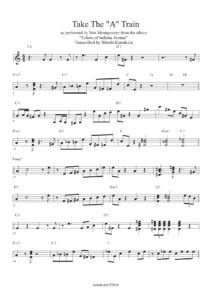 |
|
| Wes Montgomery Essential Jazz Lines (Mel Bay) |
 |
Wes Montgomery Essential Jazz Lines (Mel Bay) |
| Wes Montgomery Jazz Guitar Artistry arr. by Zafar Soood with TABs |
 |
Wes Montgomery Jazz Guitar Artistry arr. by Zafar Soood |
| Wes Montgomery Jazz No Blues Guitar |
 |
|
| Wes Montgomery The Early Years (Mel Bay) Jazz Guitar Solos Tablature |
 |
Wes Montgomery The Early Years (Mel Bay) Jazz Guitar Solos Tablature |
| Wes Montgomery The End Of A Love Affair Guitar Tabs |
 |
|
| West Side Story – Somewhere (Voice and Piano) Leonard Bernstein | West Side Story – Somewhere | |
| West Side Story (The Musical) Vocal Score Arthur Laurents, Leonard Bernstein, Stephen Sondheim |
 |
West Side Story Vocal Score – Leonard Bernstein |
| Westlife – Cant Lose What You Never Had | ||
| Westlife – Flying Without Wings | ||
| Westlife – If I Let You Go | ||
| Westlife – Mandy | ||
| Westlife – You Raise Me Up Guitar arr. with TABs | Westlife – You Raise Me Up Guitar arr. with TABs | |
| Westlife Unbreakable Greatest Hits |
 |
 |
| Wet Wet Wet – Love Is All Around | ||
| Wexford Carol (Musescore File).mscz | ||
| Wham , George Michael And Me By Andrew Ridgeley (Book) |
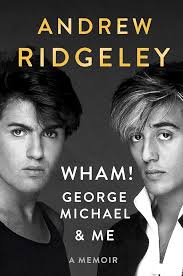 |
|
| Wham Make It Big Piano Vocal Guitar Chords |
 |
Wham Make It Big Piano Vocal Guitar Chords |
| What a Wonderful World – Thiele & Weiss |
 |
|
| What a wonderful world – Louis Armstrong.mscz | ||
| What A Wonderful World (Lead Sheet With Lyrics ) Musescore File.mscz | ||
| What a Wonderful World (lead sheet) – Thiele & Weiss | What a Wonderful World (lead sheet) – Thiele & Weiss | |
| What A Wonderful World (Musescore File).mscz | ||
| What a wonderfull World (Jazz Standard) Guitar Tablature TABs | What a wonderfull World (Jazz Standard) Guitar Tablature TABs | |
| What A Wonderlful World (Lead Sheet) (Musescore File).mscz | ||
| What You’re Made Of – Même Si (Lucie Silvas – Grégory Lemarchal | ||
| What’s That Sound An Introduction To Rock And Its History By John Covach And Andrew Flory (Book) |
 |
|
| When A Man Loves A Woman Calvin Lewis & Andrew Wright |
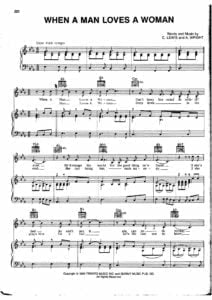 |
|
| When Almonds Blossomed – Giya Kancheli | When Almonds Blossomed – Giya Kancheli-1 | |
| When Almonds Blossomed (Musescore File).mscz | ||
| When I Fall In Love – Victor Young (Bill Evans Ver.) (Musescore File).mscz | ||
| When I fall in love Bill Evans version | When I fall in love Bill Evans version | |
| When I’m Sixty-Four (Beatles) | ||
| When Lights Are Low (Benny Carter) As Played By Miles Davis (Musescore File).mscz | ||
| When The Saints Go Marchin In – Gospel Traditional Folk song (Piano solo with Lyrics) | When The Saints Go Marchin In – Gospel Traditional Folk song (Piano solo with Lyrics) SAMPLE | |
| When The Saints Go Marching In – Fun piano arrangement | When The Saints Go Marching In – Fun piano arrangement | |
| When you told me you loved me (Jessica Simpson) | ||
| When You Wish Upon A Star (Musescore File).mscz | ||
| When You Wish Upon A Star (From The Film Pinocchio) Easy Piano Solo Arr. Sheet Music (Musescore File).mscz | ||
| When You Wish Upon A Star (Leigh Harline and Ned Washington) from Pinocchio Jazz Piano Solo arr. sheet music | When You Wish Upon A Star (Leigh Harline and Ned Washington) from Pinocchio Jazz Piano Solo arr. sheet music | |
| When You Wish Upon A Star (Solo Piano Arr ) David Dinh |
 |
|
| When You’re Gone (Avril Lavigne) | ||
| When You’re Smilling (Musescore File).mscz | ||
| Where have all the-flowers gone (guitar & voice) | Where-have-all-the-flowers-gone (guitar & voice) | |
| While your lips are still red (Nightwish) | ||
| Whistling away the dark (Darling Lili OST) Henry Mancini | ||
| White Album 2 Ending 3 Sayonara No Koto |
 |
|
| White Christmas -Irving Berlin – Piano sheet music |
 |
|
| White Christmas Irving Berlin (Musescore File).mscz | ||
| White Christmas Medley (Liberace) | ||
| White skin like the moon (Jane Eyre 2011 OST) Dario Marianelli | ||
| Whitesnake – Here I Go Again |
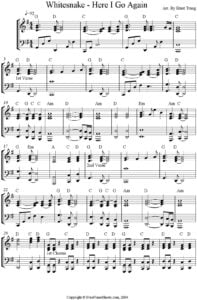 |
|
| Whitesnake Guitar Collection with TABs |
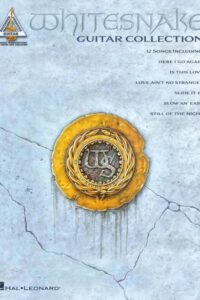 |
Whitesnake Guitar Collection with TABs |
| Whitesnake Is This Love Piano Vocal Guitar Chords | Whitesnake Is This Love Piano Vocal Guitar Chords | |
| Whitney Houston – Jesus Loves Me Sheet Music |
 |
|
| Whitney Houston The Best Of |
 |
Whitney Houston, The Best Of |
| Whitney Houston – I Will Always Love You | ||
| Whitney Houston – It’s Easy To Play Whitney Houston |
 |
Whitney Houston – It’s Easy To Play Whitney Houston |
| Whitney Houston – Saving All My Love For You | ||
| Whitney Houston – The Greatest Hits |
 |
Whitney – The Greatest Hits |
| Whitney Houston – The Greatest Love Of All | ||
| Whitney Houston I will always love you | Whitney Houston – I Will Always Love You | |
| Whitney Houston My Love Is Your Love |
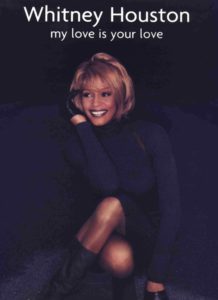 |
Whitney Houston My Love Is Your Love |
| Who wants to live forever (Queen) | ||
| Whole New World Sheet Music, A – Alan Menken |
 |
|
| Why Jazz? A Concise Guide – Kevin Whitehead (book) |
 |
|
| Wicked The Musical Sheet Music Full song Book Music and lyrics by Stephen Schwartz |
 |
Wicked the musical contents — Wicked The Musical Sheet Music Full Book |
| Wieck – Piano Studies | ||
| Wiklund Adolf Fran Mitt Fonster (From my Window) Piano Solo |
 |
|
| Wild – Fantasy On Gershwin’s Porgy And Bess | Wild Fantasy On Gershwin’s Porgy And Bess | |
| Wild Gershwin Seven Virtuoso Etudes | Wild Gershwin Seven Virtuoso Etudes | |
| Wild, Earl – Gershwin Étude No. 4 based on Embraceable You Piano | Wild, Earl – Gershwin Etude No. 4 based on Embraceable You Piano | |
| Wilde Theme (Debbie Wiseman) | ||
| Wilhelm Kempff Musik Des Barock Und Rokoko – Nr. 13 Menuett G-Moll G.F. Händel (Musescore File).mscz | ||
| Will B. Morrison – Melody in F (Syncopated Waltz) sheet music |
 |
|
| Will Young – Anything Is Possible |
